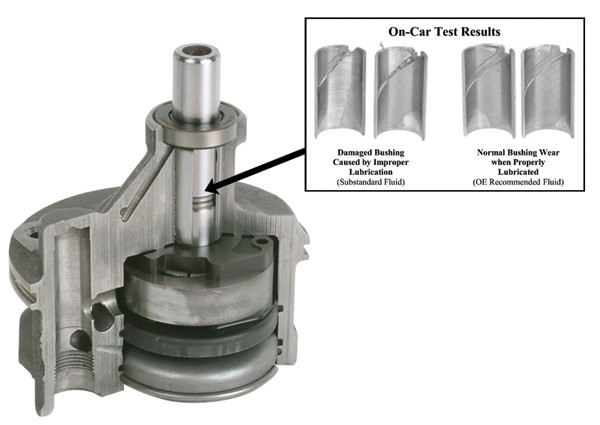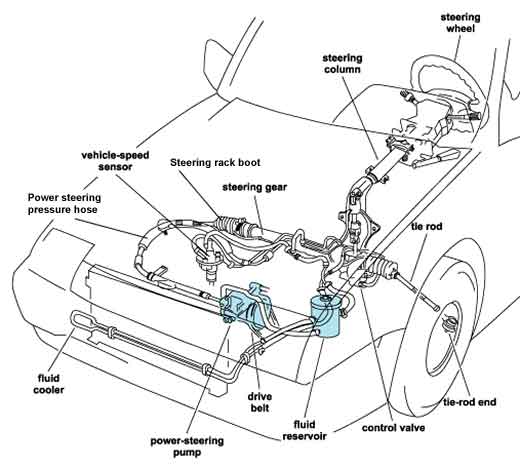Power steering pump problems can cause difficulty in steering and lead to potential safety hazards. These issues may include leaks, noise, and loss of power assistance.
Your vehicle’s power steering system is a marvel of modern engineering, designed to make driving a seamless and effortless experience. At the heart of this system lies the power steering pump, a critical component responsible for generating the hydraulic pressure needed to assist in steering.When this pump encounters problems, it can turn your smooth driving into a challenging ordeal.
In this blog post, we’ll explore the common power steering pump problems, their causes, and the solutions to keep your vehicle steering smoothly.

Credit: www.cardone.com
Contents
- 1 Common Symptoms of Power Steering Pump Problems
- 2 Effective Solutions and Preventive Measures
- 3 Frequently Asked Questions
- 3.1 What Are The Common Signs Of Power Steering Pump Issues?
- 3.2 How Often Should The Power Steering Fluid Be Checked?
- 3.3 Can I Drive With A Faulty Power Steering Pump?
- 3.4 What Causes A Power Steering Pump To Fail?
- 3.5 How Much Does It Cost To Replace A Power Steering Pump?
- 3.6 How Long Does It Take To Replace A Power Steering Pump?
- 4 Conclusion
Common Symptoms of Power Steering Pump Problems
Here are some common sign of the power steering pump problems –
- Unusual Noises:
- Whining or Squealing: A high-pitched squealing or whining noise when you turn the steering wheel often indicates that the power steering pump is low on fluid or has an internal issue.
- Groaning or Moaning: These noises suggest that the power steering fluid might be contaminated or the pump is failing.
- Difficulty Steering:
- Stiff Steering Wheel: If the steering wheel becomes hard to turn, especially at low speeds or when the vehicle is stationary, it could indicate a failing power steering pump.
- Unresponsive Steering: A delayed or sluggish response when turning the wheel is a red flag that something is wrong with the power steering system.
- Leaking Power Steering Fluid:
- Puddles Under the Car: If you notice power steering fluid under your vehicle, it’s likely there’s a leak in the system, which could originate from the pump, hoses, or connections.
- Discolored or Foamy Fluid:
- Dark or Dirty Fluid: Power steering fluid that appears dark or contaminated can damage the pump and other components.
- Foamy Fluid: Air bubbles in the power steering fluid can reduce its effectiveness, often caused by leaks or low fluid levels.
Root Causes of Power Steering Pump Problems
- Low Fluid Levels:
- Insufficient power steering fluid is a common culprit behind many pump issues. Leaks or neglecting regular checks can lead to low fluid levels, straining the pump.
- Contaminated Fluid:
- Dirt, debris, and other contaminants in the fluid can clog the pump and wear out components faster, leading to failure.
- Worn-Out Components:
- Over time, seals, hoses, and bearings can wear out, causing leaks and reducing the efficiency of the pump.
- Overheating:
- Excessive heat can break down the power steering fluid, reducing its lubrication properties and increasing friction within the pump.
- Improper Maintenance:
- Using the wrong type of fluid, failing to replace old fluid, or ignoring regular maintenance can lead to premature pump failure.

Credit: www.centralparkgarage.com
Effective Solutions and Preventive Measures
Here are the solutions according to the problems –
- Regular Maintenance:
- Check power steering fluid levels regularly. Follow your vehicle manufacturer’s guidelines for fluid replacement intervals.
- Prompt Leak Repairs:
- Address any signs of power steering fluid leaks immediately. This may involve replacing hoses, seals, or the pump itself to prevent further damage.
- Use Correct Fluid:
- Always use the power steering fluid specified by your vehicle’s manufacturer. Using incorrect fluid can cause contamination and reduce pump performance.
- Inspect and Replace Worn Components:
- Regularly inspect the power steering system for worn or damaged parts and replace them as necessary. This includes hoses, seals, and the pump.
- Professional Inspections:
- If you notice any symptoms of power steering pump problems, have your vehicle inspected by a professional mechanic. They can diagnose the issue accurately and recommend the appropriate repairs.

Credit: www.goldeagle.com
Frequently Asked Questions
Here are some FAQs about the problems of power steering pump –
What Are The Common Signs Of Power Steering Pump Issues?
Common signs include whining noise, difficulty steering, fluid leaks, and erratic steering response.
How Often Should The Power Steering Fluid Be Checked?
Regularly check power steering fluid levels every 3 months or as per manufacturer’s recommendations.
Can I Drive With A Faulty Power Steering Pump?
Driving with a faulty pump is unsafe and should be addressed immediately to prevent accidents.
What Causes A Power Steering Pump To Fail?
Common causes of failure include leaks, contaminated fluid, overheating, and lack of maintenance.
How Much Does It Cost To Replace A Power Steering Pump?
The cost varies based on the car model, but replacement typically ranges from $200 to $600.
How Long Does It Take To Replace A Power Steering Pump?
On average, it takes about 2 to 3 hours for a professional mechanic to replace the power steering pump.
Conclusion
To sum up, power steering pump problems can be a significant headache for vehicle owners. Identifying the warning signs, such as difficulty in steering or strange noises, is crucial in preventing further damage. Regular maintenance and inspections are essential to ensure the smooth functioning of the power steering system.
By addressing these issues promptly, drivers can enjoy a safer and more comfortable driving experience. Trusting a professional mechanic to diagnose and repair any power steering pump problems is the best course of action. Keep your power steering system in top shape to avoid costly repairs down the line.